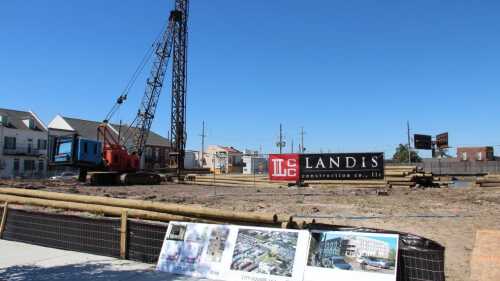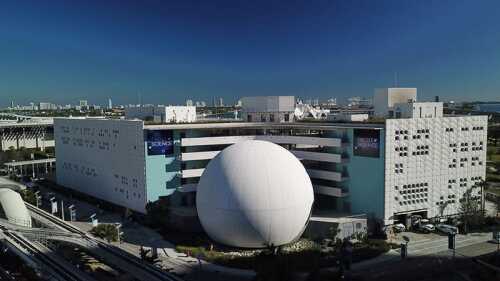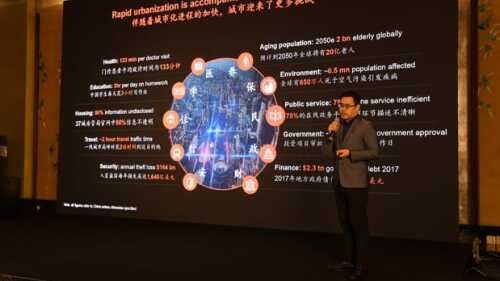America’s ability to compete globally very much depends on the willingness of thousands of locally elected officials to invest in the future and build the critical public/private partnerships needed to harness the strengths of their communities.
We are living in the midst of a remarkable shift in the rules that determine the competitiveness of metropolitan areas. Over the past 20 years, millions of manufacturing jobs have been lost across America, even as millions of new jobs have been added in the health, education, and technology sectors.
Traditional manufacturing centers like Detroit, Pittsburgh, and Cleveland are some of the most visible places where these shifts have occurred, but virtually every city is undergoing this same type of change. For example, San Francisco lost 70,000 manufacturing jobs in the past 20 years, but in that same period added 130,000 jobs in education, health, or professional services. During that same period, the Research Triangle in North Carolina lost 15,000 manufacturing jobs, but gained 130,000 jobs in education, health, and professional services; Boston lost 110,000 manufacturing jobs, but added 180,000 jobs in education, health, and professional services.
This shift in employment has significant impacts on land use, education requirements for residents, and the competitiveness of a community. Whereas historically a community’s reason for existence depended on natural resources or transportation, the ingredients for success now are not as tangible. Increasingly, anchor institutions—hospitals and universities—are the largest employers in a community, and the research conducted in those institutions has become the raw material for the development of new industries.
Successful 21st-century cities will have to take into account this remarkable shift in where and how they work. Some cities will continue to maintain a competitive advantage in more traditional sectors, such as ports or entertainment centers or manufacturing, but even in those cases anchor institutions will offer an opportunity to diversify their economies. For example, cities such as Las Vegas, Orlando, and New Orleans are working hard and investing millions of dollars to expand the innovative part of their economies, even though they are better known for other reasons.
Cities that will be successful, will build on three assumptions:
- They will be well managed and safe, offer excellent education opportunities, and have reasonable tax rates.
- They will be committed to economic innovation and the availability of capital, and embrace entrepreneurial public/private/institutional partnerships.
- They will be vibrant places to live, providing a high quality of life, reasonably priced housing choices, and a regional vision.
Unlike many places in the world where land use and education and industrial policies are centrally planned, in the United States these policies are overwhelmingly decided by local governments. There are 74,019 local governments and 13,506 school districts in the United States that control many land use and education policies. The country’s ability to compete globally is very much dependent on the willingness of thousands of locally elected officials to invest in the future and build the public/private partnerships essential to harnessing the strengths of the community.
The ability of a community to manage itself efficiently and effectively is critical, but often taken for granted. As an example, in the 1990s, New York City’s violent-crime rate skyrocketed, creating a real sense of unease about visiting or investing in the city. Under a new mayor and new police commissioner, the city’s crime rate dropped by 75 percent in two years as new management and crime-fighting technology were introduced. The same types of innovations are needed in the management of a city for it to succeed and maintain a reasonable tax rate. Nowhere is that more important than in education. As the shift in employment occurs, the ability of a community to provide an educated workforce able to do an increasing amount of more technical work will be a deciding factor in the growth and location of businesses in the near future.
A total of $400 billion is invested in research in the United States each year, much of it at universities and hospitals. In many ways those research investments are the raw materials of an innovation economy. The ability of institutions to attract research dollars is the first challenge: it requires institutions to do cutting-edge research. But like coal in the ground, the raw material of research does not create value beyond the people working in the research unless the infrastructure to exploit the technology is in place. This is not what one thinks of when the word infrastructure is used; it is usually applied to roads and sewer and water lines. In this context, infrastructure is the technology transfer policy, the availability of early-stage and venture capital, an entrepreneurial business climate, incubators to support startup companies, and a host of other ingredients. Most important, successful employment of this infrastructure requires an entrepreneurial public/private/institutional partnership. Places such as the Research Triangle, Pittsburgh, and San Diego are examples of cities and regions where such partnerships were created and where regional leaders consciously chose to invest and grow new, more diversified economies.
| About $35 billion in venture capital is invested in the United States annually, almost two-thirds of which goes to just three regions: San Francisco/San Jose, New York City, and Boston (above left). Places such as Pittsburgh (above right) are where entrepreneurial public/private/institutional partnerships were created and where regional leaders consciously chose to invest and grow new, more diversified economies. |
About $25 billion in venture capital is invested in the United States annually. Almost two-thirds of that goes to just three regions of the country—San Francisco/San Jose, Boston, and New York City. The ability to commercialize and finance research is a crucial asset in order for a community to retain the talented people that often it has educated and developed. Likewise, to keep that talent it is important to have civic and public leadership, in partnerships with institutions, to establish sources of funding—both early-stage and venture capital.
People want to live in a place that provides good jobs. They also want to live in places that are vibrant, fun communities. Not every community will have oceans and warm weather, but every community has some assets. The challenge for communities will be how they treat those assets. It is the way assets such as parks, culture and the arts, and safe neighborhoods are celebrated and showcased that will determine the vibrancy of a community.
We are at a historic moment when the rules are changing. Those communities that build partnerships to shape their response to these changes will be those that become successful 21st-century cities.







